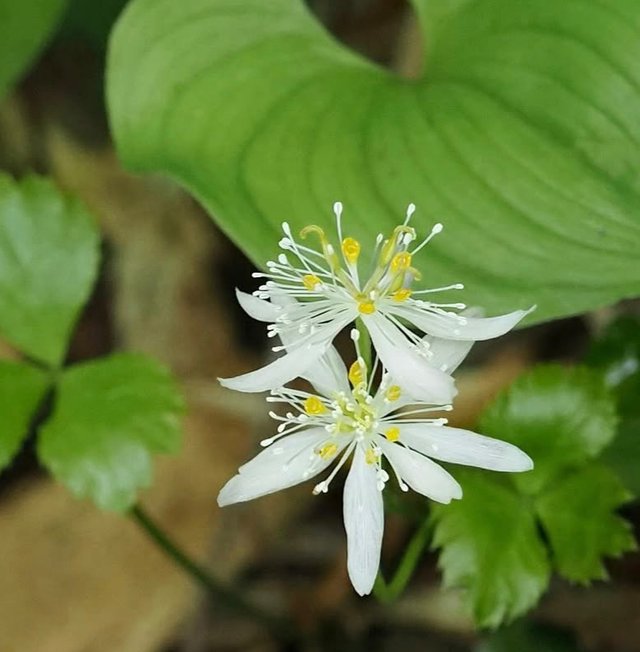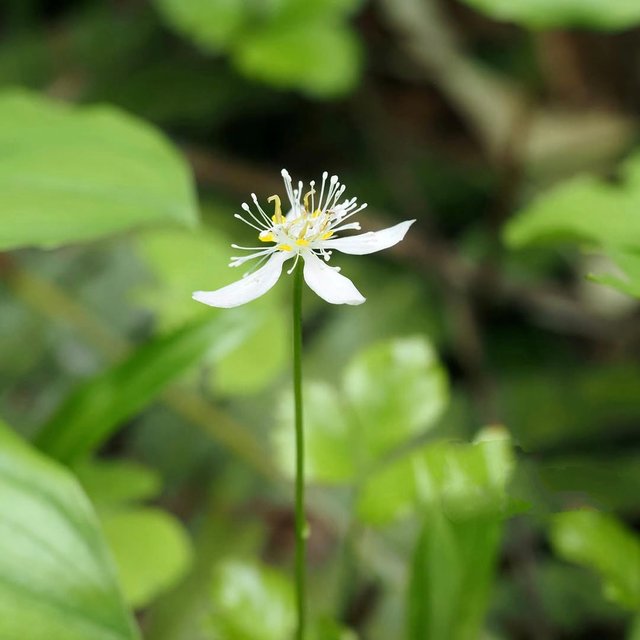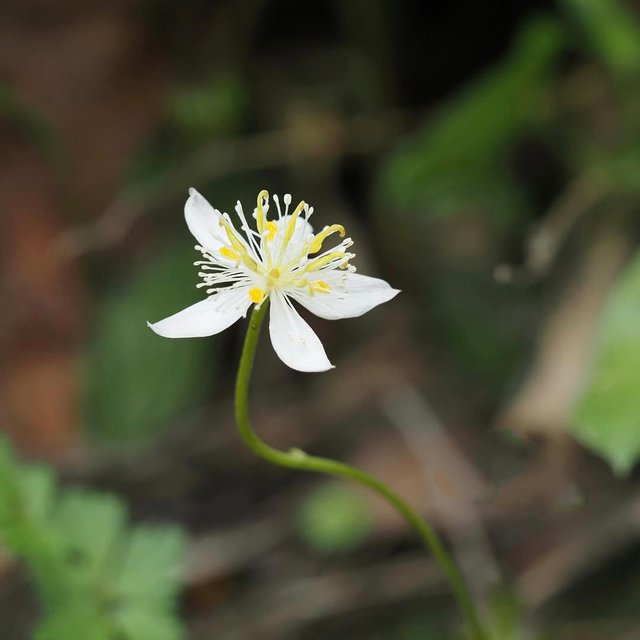Threeleaf goldthread
Threeleaf goldthread is a small perennial herbaceous plant belonging to the Ranunculaceae family, native to the cool temperate and subarctic regions of North America and parts of East Asia. It typically grows in moist, acidic soils of coniferous and mixed forests, mossy bogs, and shaded wetlands, thriving in habitats with high humidity and partial shade. The plant is named for its distinctive basal leaves, each divided into three toothed leaflets, which are evergreen and remain visible even under snow in winter. It produces slender stems bearing small, star-shaped white flowers in late spring to early summer, usually with five to seven petal-like sepals and numerous yellowish stamens, while the true petals are tiny and scale-like.
The underground portion consists of bright yellow, threadlike rhizomes, which are the source of the common name “goldthread” and have historically been valued for their medicinal properties. Indigenous peoples and early settlers used the rhizomes as a natural remedy for mouth sores, sore throats, digestive problems, and infections due to their high content of the bitter alkaloid berberine, which has antimicrobial and anti-inflammatory effects. Despite its small size, threeleaf goldthread plays an important role in forest ecosystems, providing ground cover that helps retain soil moisture and prevent erosion.
It is slow-growing and sensitive to habitat disturbance, making it vulnerable to overharvesting in some areas. The plant is not typically cultivated for ornamental use due to its modest appearance and specific growing requirements, but it is appreciated by botanists and naturalists for its ecological significance, medicinal history, and resilience in cold, harsh climates. Its combination of delicate floral beauty, evergreen foliage, and golden medicinal roots has made it a symbol of subtle yet enduring strength in the wild landscapes it inhabits.



